It’s a nerve-racking time for contractors – and nobody knows this better than Greg Craig, who has fond memories of his stint at Carillion and hopes its collapse will serve as a cautionary tale. But at the helm of Skanska UK, he detects calmer waters ahead.
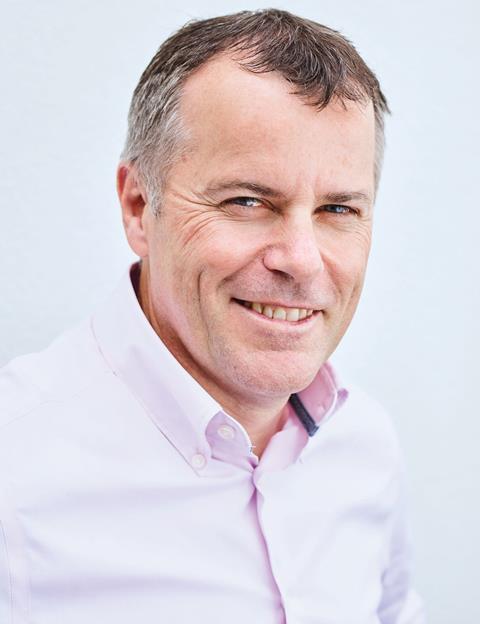
Photography: Tom Campbell
“No, not really.” Skanska UK chief executive Greg Craig is talking about whether he was surprised when Carillion, his former employer, went bust.
“It wasn’t the biggest surprise, particularly after the first massive writedown. A number of contractors have had writedowns, but nothing that big. And you always wonder if there’s a follow-up.”
There was. Carillion’s initial £845m writedown, made last July, got worse just a couple of months later when the firm turned in a £1.2bn loss for the first half of 2017. For 55-year-old Craig, who spent six years at the business before joining Skanska in 2003, there is one positive from the disaster. “It has knocked on the head the perception that if you want to transfer lots of risk, go find a big contractor. There has been far too much of that going on from clients and advisers. No contractor is too big to fail.”
‘A skill our managers need is the ability to work out whether we need to intervene or not. then you get people taking action at an earlier point’
Greg Craig, Skanska
Skanska has been dealing with its own problems. Just a few weeks after Craig took over from his predecessor, Mike Putnam, last year, the firm announced a writedown of its own – a more modest £32m, which it blamed on a handful of jobs. The period since has proved to be a sobering one for the £1.8bn company which, along with the writedown, has over the past year rejigged its business, put its profitable piling arm up for sale and started a consultation with staff that will mean up to 150 jobs being lost at the 5,800-strong group by the end of the year.
A QS by background, Craig has been in post since May last year, and he admits he spent much of his first few months in the job getting to grips with the problems and trying to draw a line under them.
The firm has introduced an initiative called Quality of Scrutiny. “If you see a situation worsening or the risk of a situation worsening, the most important thing is to take some action,” says Craig. “You might get the decision right or wrong, but the one thing you can’t do is nothing.”
He thinks Carillion was already done for by the time of last July’s writedown. “Carillion was a huge organisation, and I think the action that it should have taken was some time before. When you don’t take action, it starts to build up and it eventually gets to a point where there is not much you can do about it.”
Craig says the trick is knowing when to step in. “One of the key skills our managers need is the ability to work out whether we need to intervene or not. If we can get our people to be brilliant at scrutiny, you get lots and lots of people taking action at an earlier point and not leaving it.”
Craig declines to name the jobs that caused Skanska’s writedown, but says there are about three, a mixture of building and civils projects. One was to repair some defects on a job finished a decade ago, with the remaining projects having what he calls “productivity issues” – running late and a dispute over “what we think we are due to recover”. “They’ll all be gone this year, well and truly dealt with,” he says.
A life in brief
Greg Craig did a QS and construction economics degree at Salford university before joining John Laing in 1985. He spent two years there based at its office in Hendon, north London. “It was John Laing, Taylor Woodrow, Wimpey – if you wanted to get solid training, [those firms were] brilliant.”
He moved on to Wates, where his very first building job was a £3.5m office block that sits above Barbican tube station. “It’s still there,” he says. Nine years later he went for a job with Wimpey – then a contractor and housebuilder, but about to become a housebuilder only after an asset swap with Tarmac saw it hand over its contracting and minerals business in return for Tarmac’s housing arm, McLean Homes. It was at Tarmac, which was to split off its contracting business in 1999, renaming it Carillion, that Craig moved from previous commercial positions to operational roles.
He joined Skanska in 2003 as an operations director, just as the firm was coming to the end of arguably its most famous recent project – the Gherkin. He never got the chance to work on it but has an opinion on the tall tower boom of recent years. Born in east London, with Glaswegian teacher parents, he says: “I’m a Londoner so I would just prefer that we don’t end up with a city that’s full of things that are the easiest to build, which are tall and square, because that’s just a boring city. It’s just kind of not London, is it?”
Rethinking the business
Asked if that’s it – if a line has now been drawn, he replies: “Do I think we are stable and strong and have a really exciting future? Yes, I do. The issues we had last year, we spent the second half of the year working really hard on how to make sure they never happen again. The real key is how you make sure that can’t occur in the business again.”
The issues have forced a rethink at the business, with the firm putting its piling arm, Cementation Skanska, up for sale. This 300-strong business posts operating margins of more than 5% on turnover typically between £65m and £90m, but Craig says the churn of buying and replacing plant and equipment means the business eats capital and selling it will free up money to plough into other areas. The firm is talking to suitors and hopes to strike a deal before the year end.
Skanska has also cut the number of business units from nine to seven, creating one building business out of the previous two and merging its M&E arm, Skanska Rashleigh Weatherfoil, with its hard facilities management business. Its redundancy consultation is wrapping up and, since the start of the year, Craig himself now reports direct to Skanska’s group chief executive, Stockholm-based Anders Danielsson.
Margins and risk
The company saw its pre-tax profit fall 43% last year to £13.6m on turnover of £1.8bn – hampered by those problem jobs – but Craig sees no reason why firms like his cannot be aiming for margins of 3% by 2020. “Is 3% attainable in the UK? Yes, it is if you’re smart, picking the right projects, picking the right customers. We should be aspiring to 3%-5%.”
But he thinks Carillion’s implosion has shone a light on how contractors are tired of being messed around and seeing their margins squeezed. Bruno Dupety, Vinci’s UK chief executive, recently said something similar, complaining that not enough clients – especially those in the public sector – are willing to share risk with the contractor. “The public sector should be more flexible and fairer in managing their contracts,” Dupety said. “It’s not the case.”
Craig has his thoughts on the issue too. Skanska is coming to the end of its deal to build the Scalpel, a 36-storey office building designed by architect Kohn Pedersen Fox (KPF) in the City of London. Its tall-towers pedigree is impressive, given it was main contractor on Foster + Partners’ Swiss Re tower – better known as the Gherkin – and built another KPF-designed tower, the Heron, which is now renamed the Salesforce Tower.
“The thing I would say about towers is: it goes back to the huge risks that customers ideally would not like to take themselves. The biggest one probably is wind,” he says, given cranes can stand idle for weeks when the wind blows. “You can get a huge shift in what the potential programme is. What you don’t need is a customer that is push, push, push on the end date. With these sorts of risks, I think we need to be careful as to where it is placed. Is it shared in any way?”
Craig notes that the margins made on tall towers going up in the City do not much differ from those on a 20-storey, commercial office building. “That’s wrong,” he says. “If people want companies to take on those absolute unknowns [on tall towers], they need to pay a lot of money for it, a lot of money.”
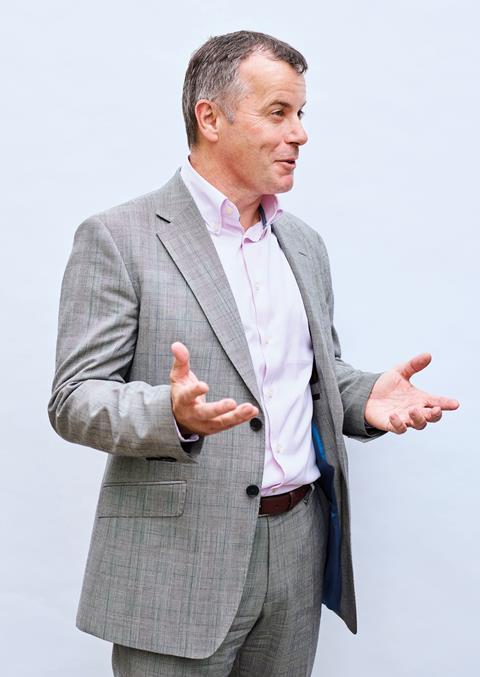
Photography: Tom Campbell
Craig on Brexit
Brexit, says Craig, does crop up a lot with his Swedish bosses. “We struggle to understand quite what the future is,” he says, adding that the head office in Stockholm is just as unclear. For Craig, the real issue is the potential impact on his supply chain. The firm has begun asking its subcontractors about how much they rely on EU labour. Craig says EU labour on some of the firm’s sites in London can be as much as 70%. “They’ve got the job of providing us with sufficient skilled labour when we want it. You can’t just ignore your supply chain. If they have a problem, you’ve got a problem.” The obvious answer, post-Brexit, is for the UK construction industry to attract, train and retain more staff. How? “Make it safe,” Craig says, adding: “If you want to keep people on site, look after them.”
Risk was also the watchword during the firm’s recent negotiations with the NHS trust tasked with finding a replacement contractor on the Midland Metropolitan hospital in Smethwick that Carillion was building when it went bust. Craig said the firm’s initial answer was no when asked by the Sandwell and West Birmingham Hospitals NHS Trust if it could do the job. This was hardly surprising, given that a recent National Audit Office report said Carillion lost £48m on it last year and the trust itself in the spring said the job, being funded by a consortium of mainly overseas banks, could cost an extra £125m to complete.
Then Skanska looked again and said that perhaps after all it could help out. But Craig adds: “What we were not prepared to do was take a massive risk, so we weren’t going to get into a competitive situation. It was on a very low risk to us. We came to a position where we could complete building for the trust in a very low-risk manner – [but] it turned out that wasn’t what all of the backers wanted.”
That was in May, but Craig holds out an olive branch. “If they came to us in six months’ time, maybe we would speak to them again.” But he adds: “It would be exactly on the same basis. There is no other basis for us to do that sort of work – we don’t need it.”
What’s really happening
This hardening of attitudes extends to the places where the firm will not work. The Far East and the Middle East do not see any Skanska site hoardings – something Craig is proud of. “We don’t work in various parts of the world for ethical reasons,” he says. The Middle East was ruled out some time ago because of “the manner in which you might have to get work, the manner in which you might have to go and get paid”.
Richard Howson, Carillion’s former chief executive, might wish his firm had taken the same stance. He told MPs in February that he visited Qatar 60 times in six years to try to collect money that he said his firm was owed on a job in Doha. “I felt like a bailiff,” he lamented.
Craig speaks fondly of his time at Carillion, recalling a time when then boss Sir Neville Simms asked him for his view of the London market, given that he was working on a job on the Embankment. “It built some fantastic projects over time.” It’s the staff he feels most sorry for. “They must have gone through a horrendous time.” But as well as puncturing the myth that no firm is too big to fail, as a board member of industry group Build UK Craig wants Carillion to be a “never again” moment. “I’m sad for the fact that we’ve had such a big disaster: it’s never good for any industry,” he says. “Carillion has allowed people to poke more into it and see what’s really happening. I hope it’s a catalyst for some proper change.”





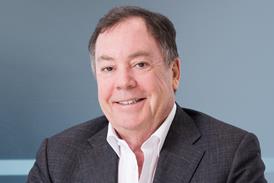
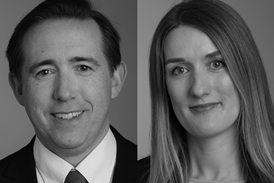


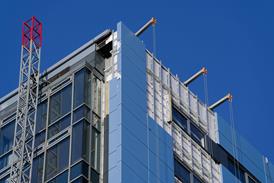













No comments yet